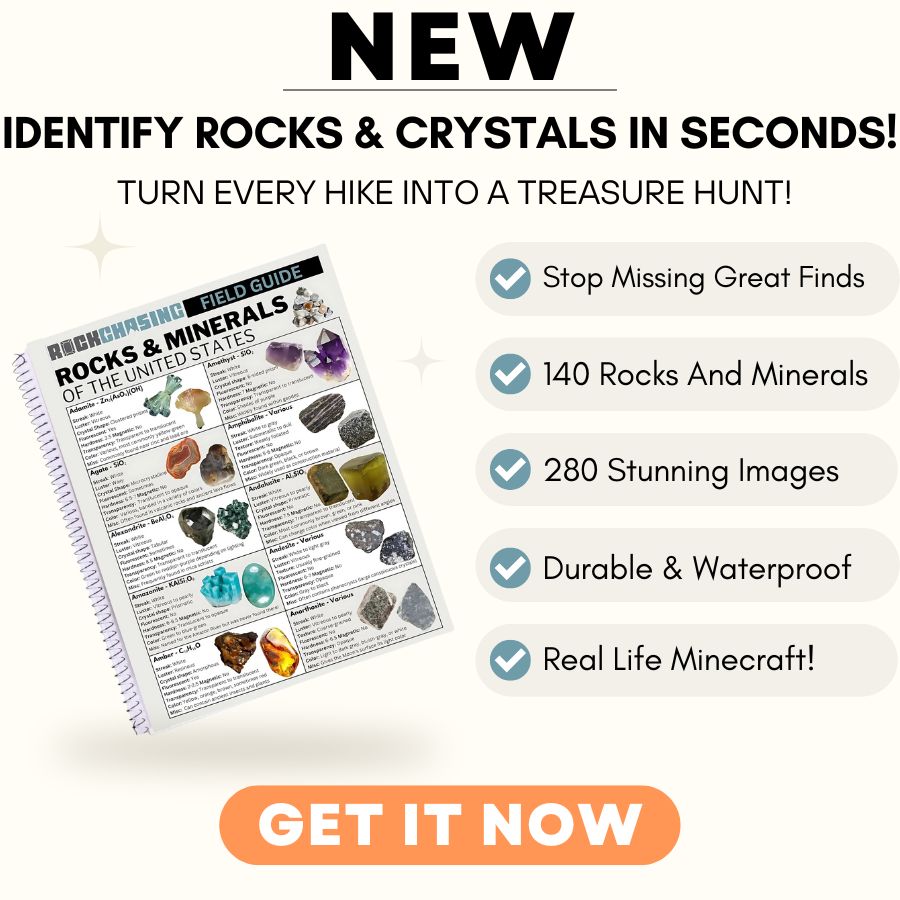Azurite’s deep blue crystals catch every rock collector’s eye. This beautiful mineral shows up in several spots across New York state.
I’ve spent years searching for azurite in New York’s old copper mines and mineral deposits. The thrill of finding these blue crystals never gets old. Some pieces look like tiny blue jewels frozen in stone.
New York’s geology makes it perfect for azurite formation. The state’s old copper deposits and limestone areas are great places to look. While finding good specimens takes patience, the search is always worth it.
How Azurite Forms Here
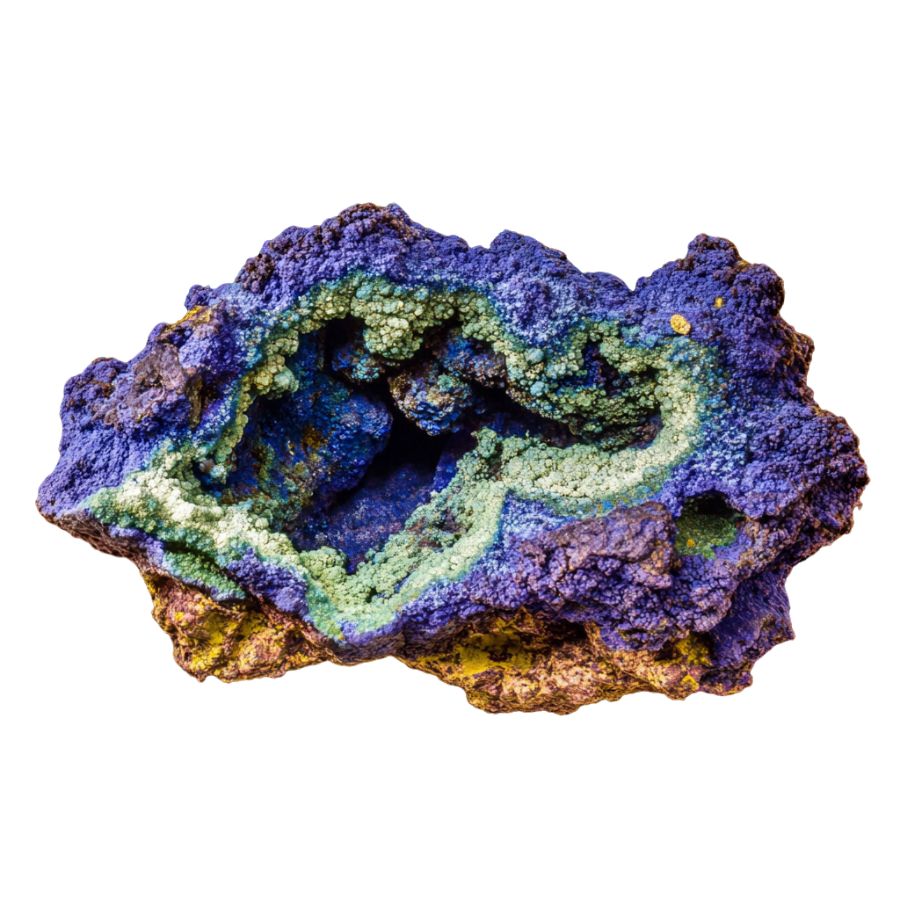
Azurite forms when copper-containing solutions react with carbonate rocks deep underground. It’s like rainwater seeping through rocks containing copper minerals.
As this acidic water dissolves the copper, it creates a solution that flows through limestone or similar carbonate rocks.
When these two meet, a chemical reaction happens, forming those beautiful blue azurite crystals. The process usually needs low temperatures and lots of carbon dioxide to work properly.
Sometimes, azurite forms in the oxidized zones of copper deposits, where the original copper sulfide minerals are weathering away.
That’s why you often find azurite near the surface of copper deposits, where it’s exposed to air and water.
Types of Azurite
Azurite occurs in several fascinating varieties, each displaying unique patterns, colors, and formations that make them distinct from one another. From sun-like radiating patterns to starry speckles and varying shades of blue to green, these different types showcase the mineral’s diverse beauty in nature.
Azurite Suns
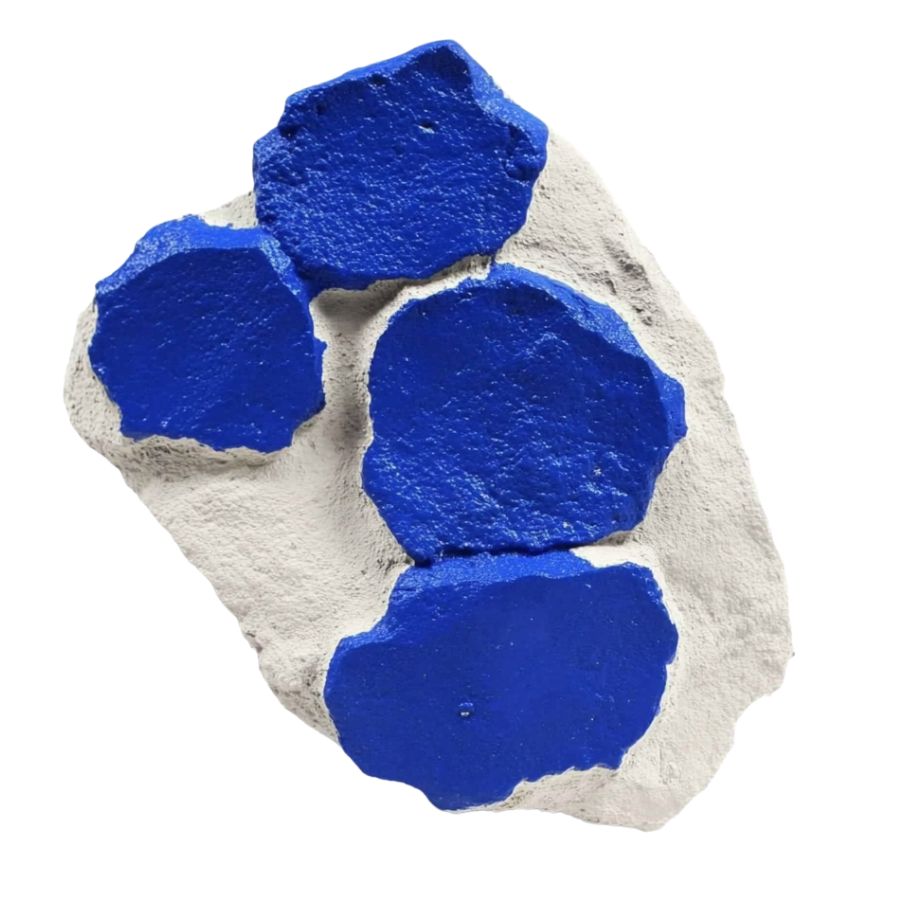
Azurite Suns showcase striking circular patterns of deep blue azurite crystals set against white kaolin clay. These natural formations create a beautiful visual effect that looks like a celestial body, with blade-like crystals radiating outward from the center.
The deep azure blue of these specimens comes from copper carbonate minerals. When exposed to certain conditions, the azurite can sometimes show hints of green where it’s starting to transform into malachite, adding extra complexity to the patterns.
The contrast between the intense blue crystals and white background makes these rocks particularly eye-catching. Some pieces display additional features like concentric rings or varying crystal sizes, adding to their visual appeal.
K2 Azurite

K2 Azurite presents a unique combination of white granite speckled with perfectly round blue dots of azurite. These blue spots range from tiny specks to larger orbs, creating an appearance similar to a starry night sky against snow.
The formation process of K2 Azurite is quite special. The blue azurite spots formed when copper-rich solutions seeped into tiny cracks in the granite, creating these circular patterns. This makes each piece unique in its dot pattern and distribution.
Stone’s composition includes fine-grained granite minerals like quartz and muscovite, with azurite forming along the grain boundaries.
Sometimes, you might spot hints of green malachite alongside the blue azurite spots, adding extra color variation.
These specimens often show interesting variations in their dot patterns. Some pieces have densely packed spots, while others display more scattered arrangements, making each piece distinctively different from the next.
Azurmalachite
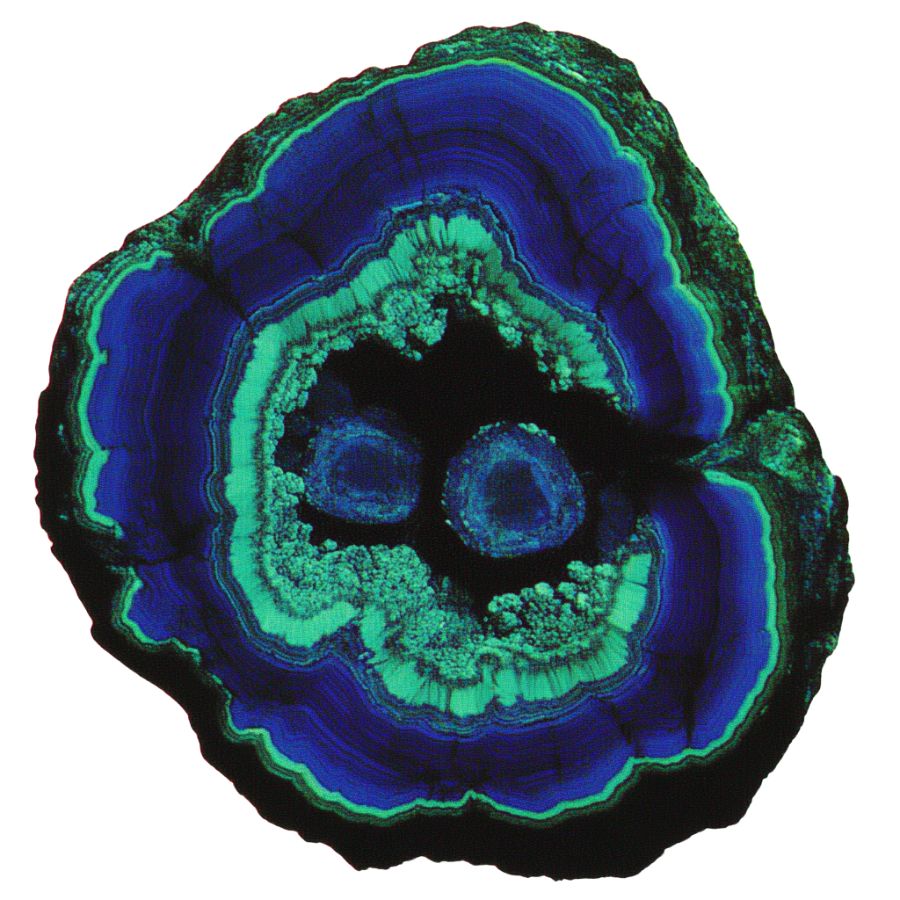
Azurmalachite is a mix of two minerals, azurite and malachite, both made of copper carbonate. The deep blue of azurite and the bright green of malachite blend together, creating eye-catching patterns.
This combination happens naturally when azurite slowly changes into malachite over time. The result is a stone with swirling colors that can be found in copper-rich areas around the world.
Azurmalachite is often shaped and polished for collectors and jewelry. Its mix of colors makes every piece look different, adding to its appeal.
Since it’s softer than many other stones, it needs careful handling to avoid scratches. Despite this, its unique appearance makes it a favorite among those who appreciate natural minerals.
Crystalline Azurite
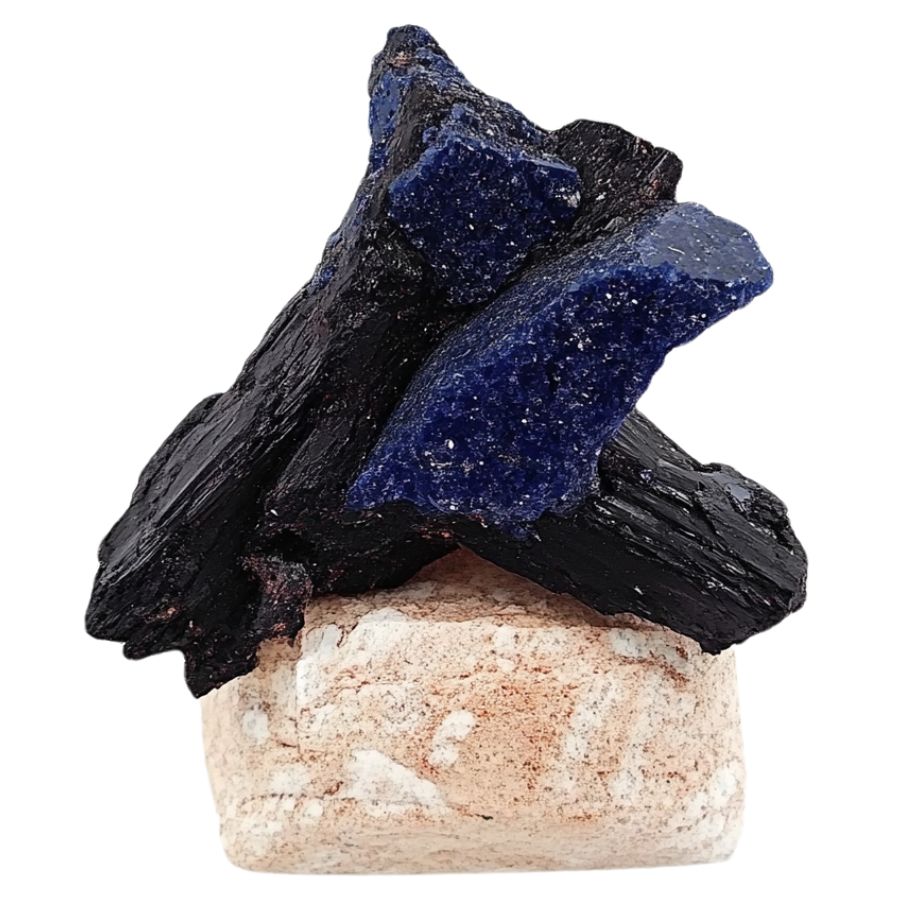
Crystalline azurite forms deep blue crystals that can be small and delicate or large and well-shaped. These crystals usually grow in sharp, geometric patterns, making them stand out from other forms of azurite.
They develop in areas rich in copper, often alongside malachite and other minerals. Some of the best crystals have been found in places like Morocco, Namibia, and the United States.
Because crystalline azurite is fragile, handling it carefully helps prevent damage. Exposure to light and air can also cause the crystals to slowly change into green malachite over time.
Collectors value these crystals for their intense color and unique shapes. Even though they are delicate, their deep blue color makes them one of the most recognizable copper minerals.
What Does Rough Azurite Look Like?
Azurite in its rough form is one of the most striking blue minerals you’ll encounter. Note that natural azurite can sometimes be confused with other blue minerals, but these tips will help you spot the real deal.
Look for the Signature Deep Blue Color
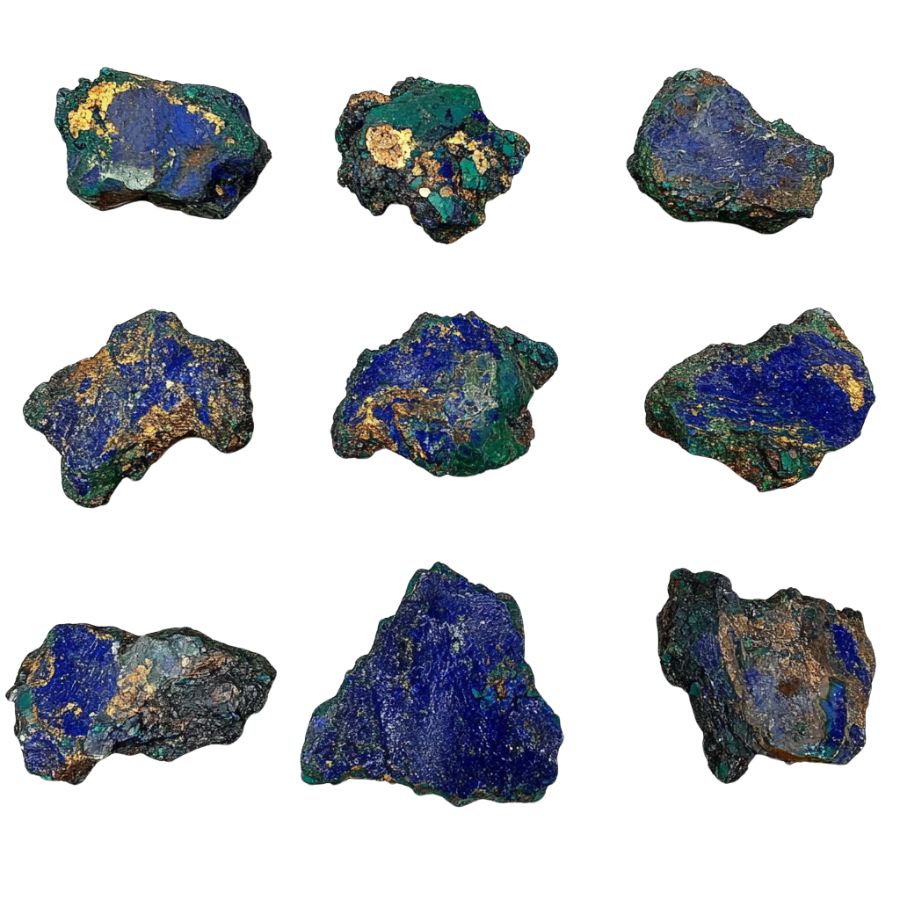
Raw azurite showcases an intense azure-blue color that’s hard to miss. Fresh specimens appear nearly royal blue, while weathered pieces might show darker shades.
Don’t be fooled by uniform blue coloring – natural azurite often has subtle variations in its blue tones. If you spot hints of light blue or even greenish patches, that’s normal! It’s actually showing early signs of transforming into malachite, its green cousin.
Check for Crystal Formations and Habits
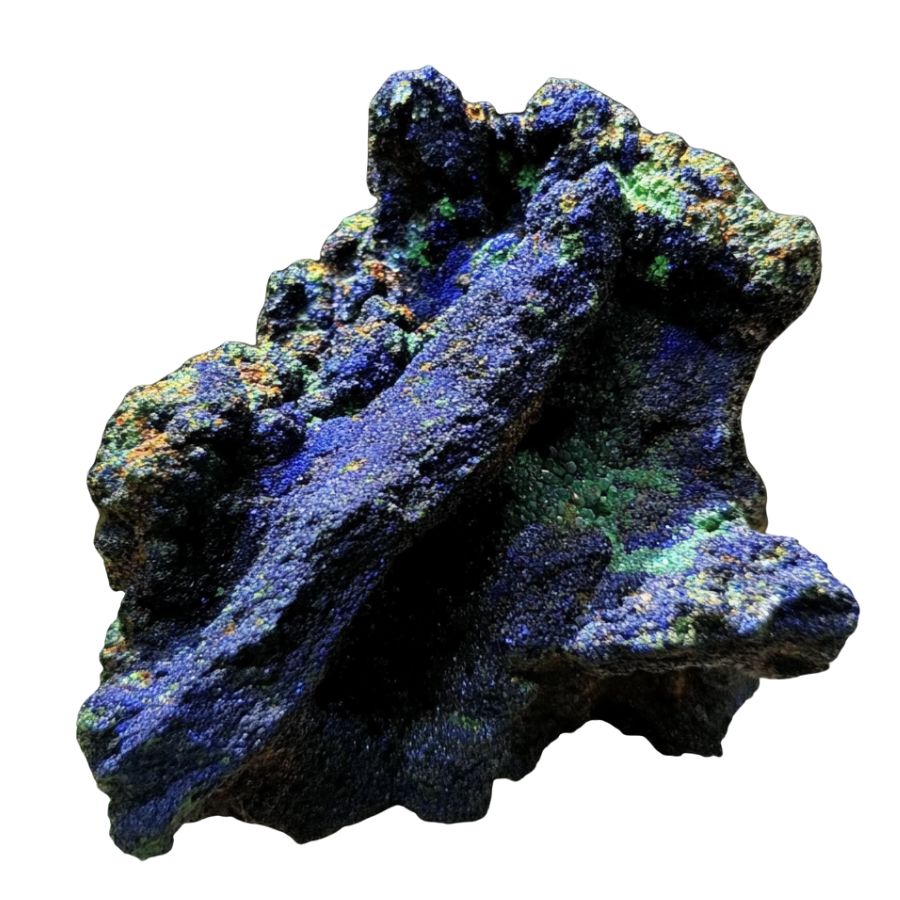
Keep an eye out for distinctive prismatic or tabular crystals. Fresh azurite typically forms in clustered rosettes or blade-like formations. Sometimes you’ll spot perfect little crystals jutting out from the matrix (that’s the host rock).
The crystals might be stubby and short, or long and slender – both are legit! If you see crystals arranged in a fan-like pattern, you’ve probably got azurite.
Assess the Surface Texture and Luster
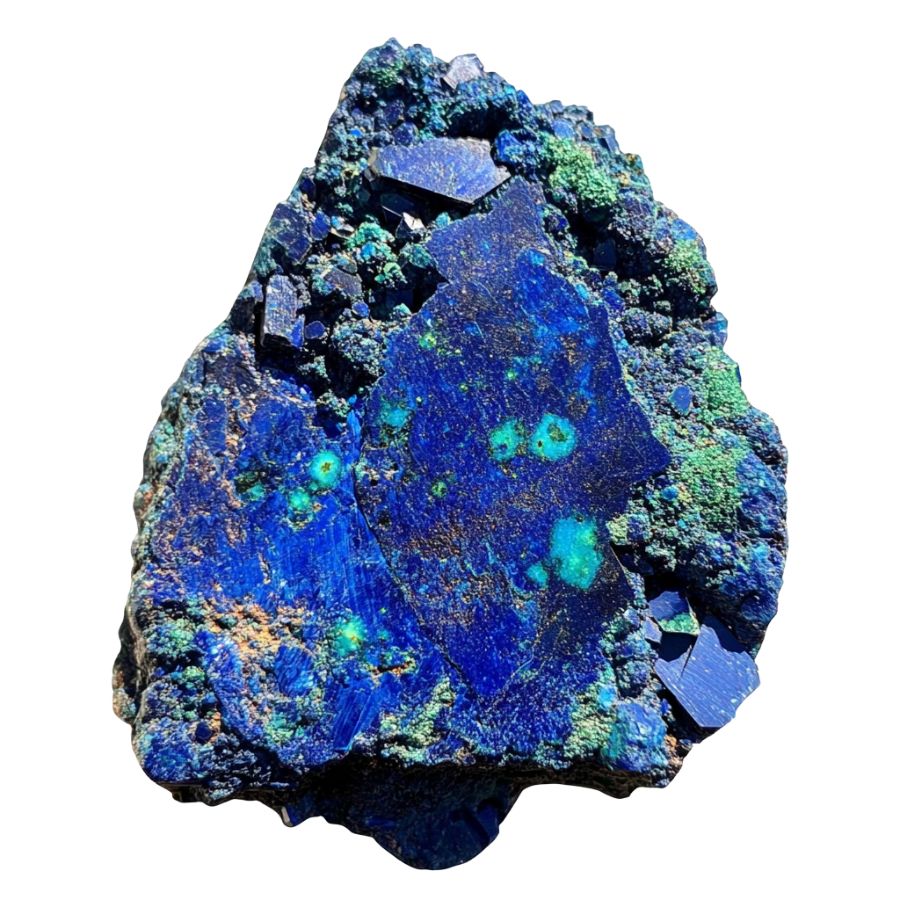
Run your fingers over the surface – azurite’s got this glassy to subvitreous luster that catches light beautifully. Massive specimens (chunks without obvious crystals) often show a more silky or velvety appearance.
Here’s a cool trick: hold it under bright light and slowly rotate it. Real azurite will show subtle flashes of light across crystal faces. Weathered surfaces might feel slightly powdery or chalky.
Test the Hardness and Structural Integrity
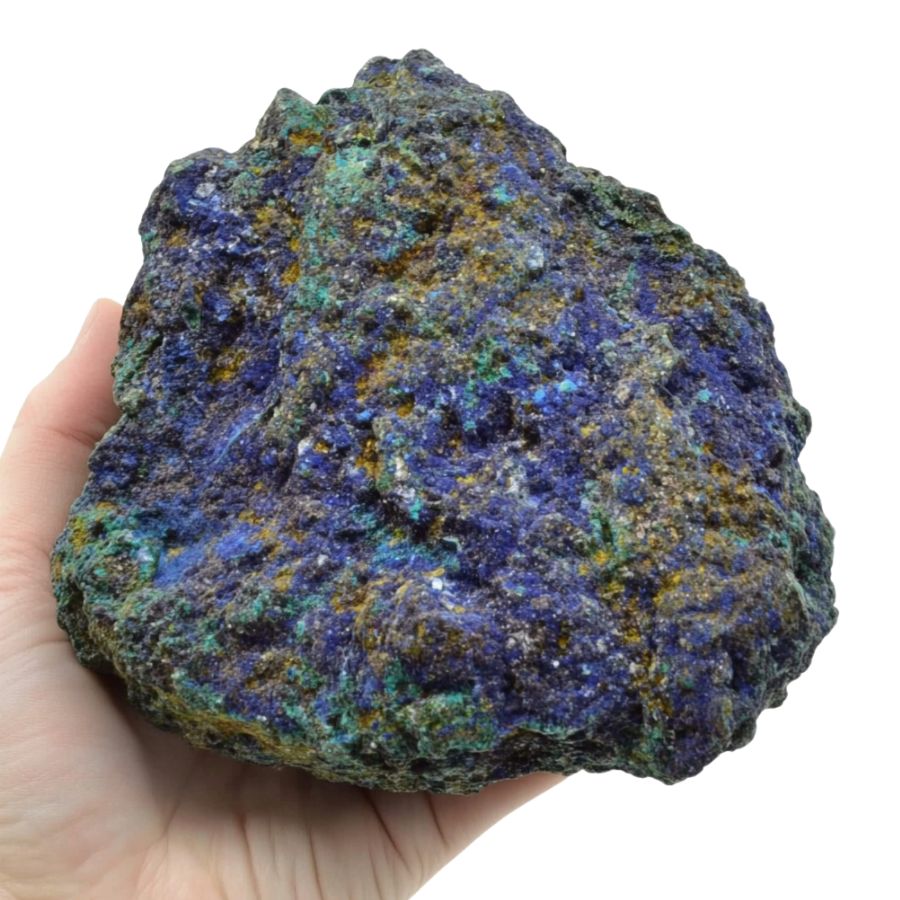
Azurite is relatively soft (3.5-4 on Mohs scale). Try this: use your fingernail – it shouldn’t scratch the mineral, but a copper penny will. Watch out though! It’s pretty fragile and can break along cleavage planes.
If it feels unusually hard or tough, you might be looking at dyed quartz or another blue mineral instead.
A Quick Request About Collecting
Always Confirm Access and Collection Rules!
Before heading out to any of the locations on our list you need to confirm access requirements and collection rules for both public and private locations directly with the location. We haven’t personally verified every location and the access requirements and collection rules often change without notice.
Many of the locations we mention will not allow collecting but are still great places for those who love to find beautiful rocks and minerals in the wild without keeping them. We also can’t guarantee you will find anything in these locations since they are constantly changing.
Always get updated information directly from the source ahead of time to ensure responsible rockhounding. If you want even more current options it’s always a good idea to contact local rock and mineral clubs and groups
Tips on Where to Look
Azurite is a copper carbonate mineral that forms in oxidation zones of copper deposits. Here’s where you can typically find this beautiful blue stone:
Limestone Areas
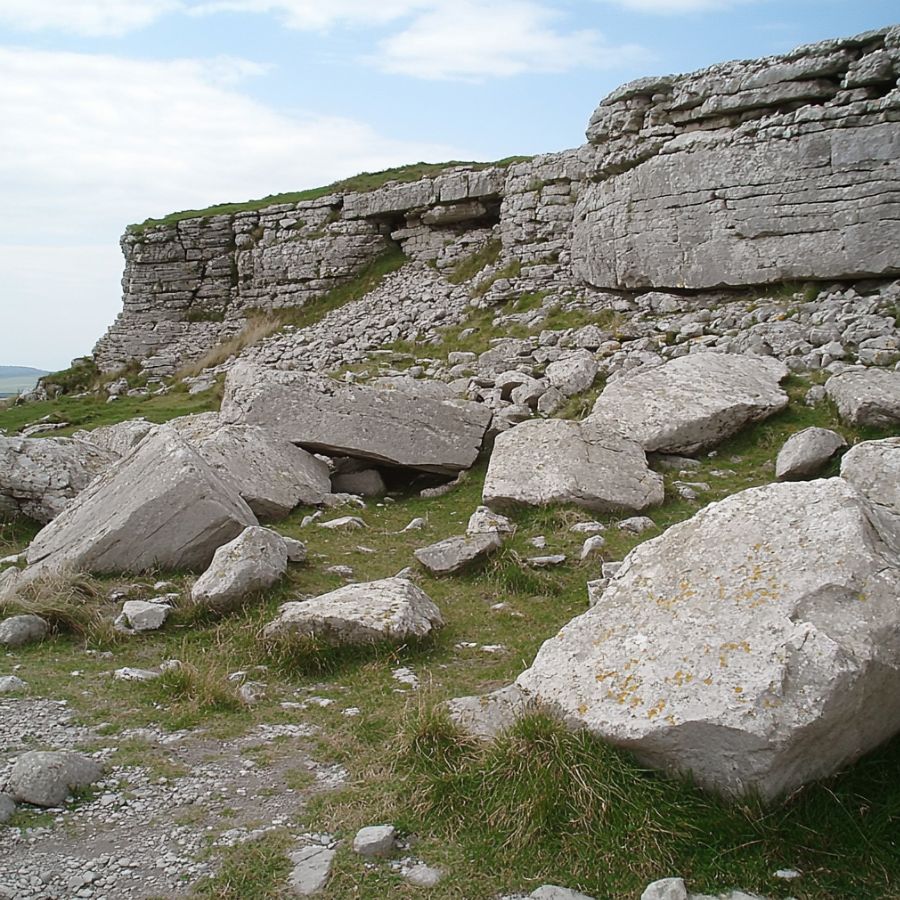
Look for areas with lots of limestone outcrops. Azurite loves to form in these rocks. Check weathered surfaces and cracks. The blue color often stands out against the gray limestone.
Sometimes you’ll find it mixed with green malachite, which is super cool because these two minerals often hang out together in the same spots. Search near the base of limestone cliffs or in quarries where they’ve cut into the rock.
Old Copper Mines
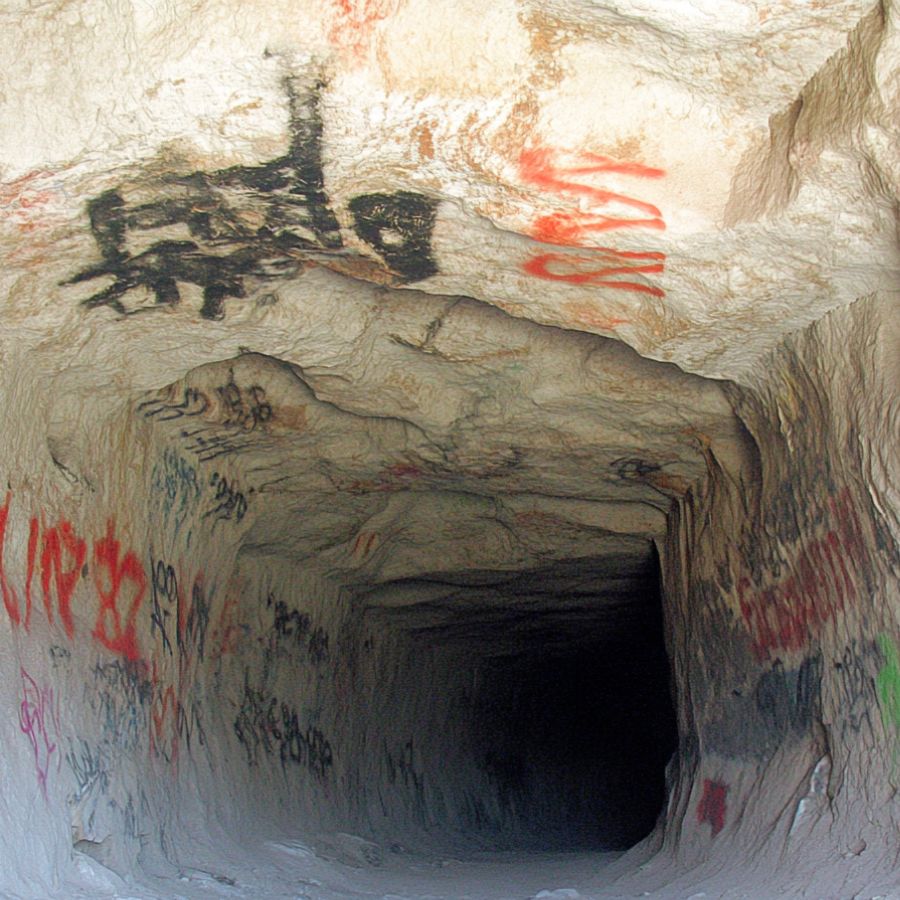
Abandoned copper mines are azurite hotspots. Check mine dumps and tailings piles. Look for rocks with green staining – that’s your first clue.
The stone often forms in small cavities or as crystal clusters. Bring a rock hammer and safety gear.
Mine dumps usually have lots of loose rocks, so you don’t need to dig deep. After rain is the best time because the wet rocks show color better.
Oxidized Rock Zones
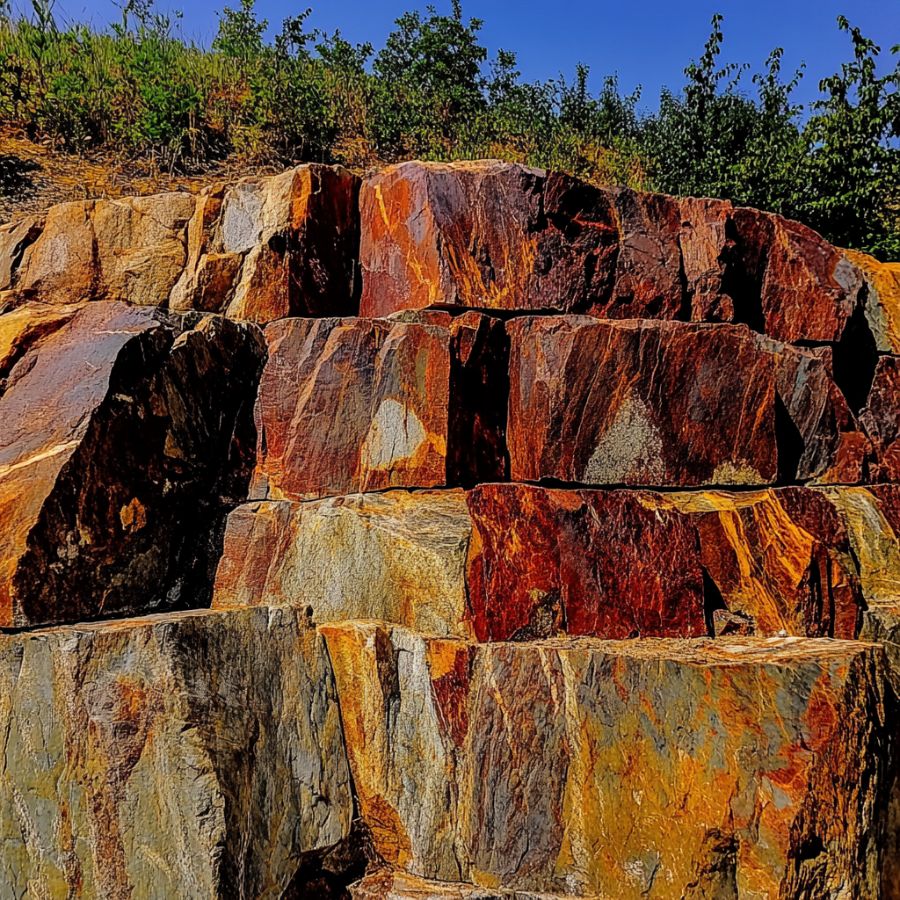
Find areas where rocks show lots of rust colors. These oxidized zones are perfect for azurite formation. Look for rocks with dark brown or reddish staining.
The azurite usually forms in small pockets or as thin crusts. Break open promising rocks – the best specimens are often hidden inside.
Check areas where water runs through rock formations because these spots have more mineral activity.
Desert Areas
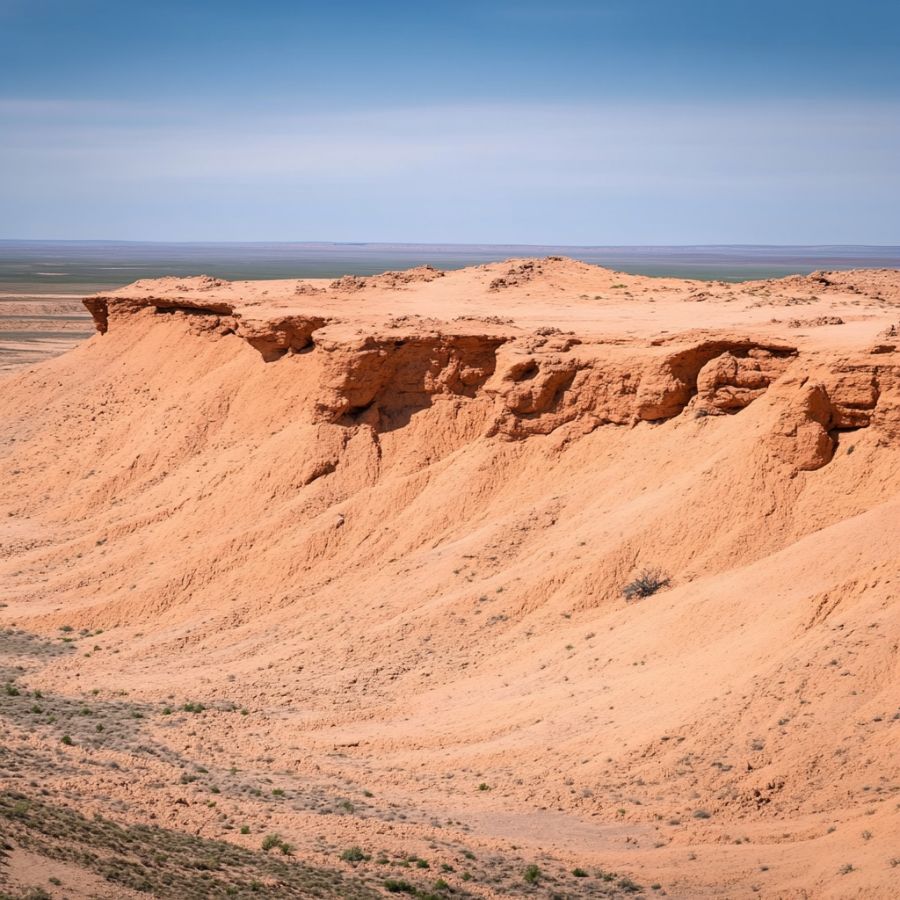
Desert regions with exposed rock formations are great spots. The dry climate helps preserve azurite. Look for areas with copper mineralization signs like green or blue staining on rocks.
Check wash-out areas after storms. Small chunks often collect in gravel beds. The intense weathering in deserts can concentrate minerals in certain spots, making them easier to find.
Some Great Places To Start
Here are some of the better places in the state to start looking for Azurite:
Always Confirm Access and Collection Rules!
Before heading out to any of the locations on our list you need to confirm access requirements and collection rules for both public and private locations directly with the location. We haven’t personally verified every location and the access requirements and collection rules often change without notice.
Many of the locations we mention will not allow collecting but are still great places for those who love to find beautiful rocks and minerals in the wild without keeping them. We also can’t guarantee you will find anything in these locations since they are constantly changing.
Always get updated information directly from the source ahead of time to ensure responsible rockhounding. If you want even more current options it’s always a good idea to contact local rock and mineral clubs and groups
Ellenville
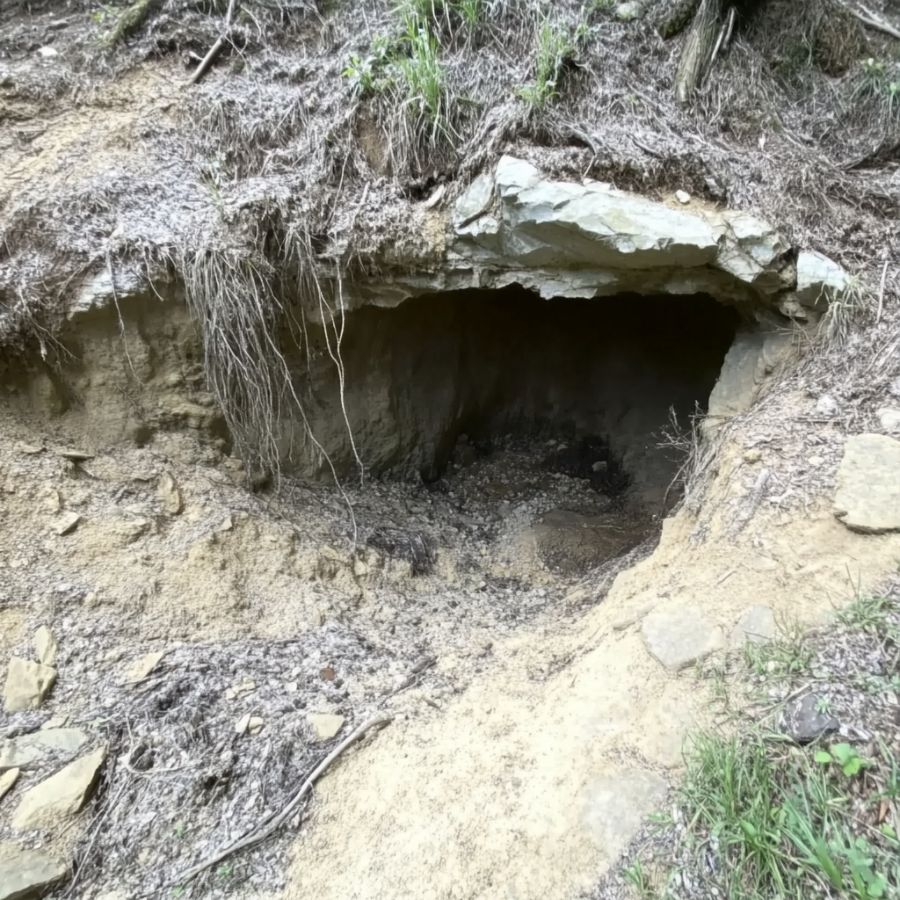
Ellenville is located in Ulster County, near the Shawangunk Mountains. This small village is important for mineral collectors because of its famous Ellenville Lead Mine, also called the Ulster Mine. The mine has been around since the 1700s and is known for its rich mineral deposits.
Large quartz veins run through the mine, often containing bright blue azurite crystals. These crystals form when copper-rich minerals break down over time. Many collectors have found good samples of azurite here, usually near the old mine workings.
Other interesting minerals like chalcopyrite and galena can also be found here. Rock hunters should look closely at the exposed quartz veins and old mine dumps.
The best azurite specimens are often found where copper minerals are present. The rocks around the old mine shafts are particularly good places to search.
Manhattan
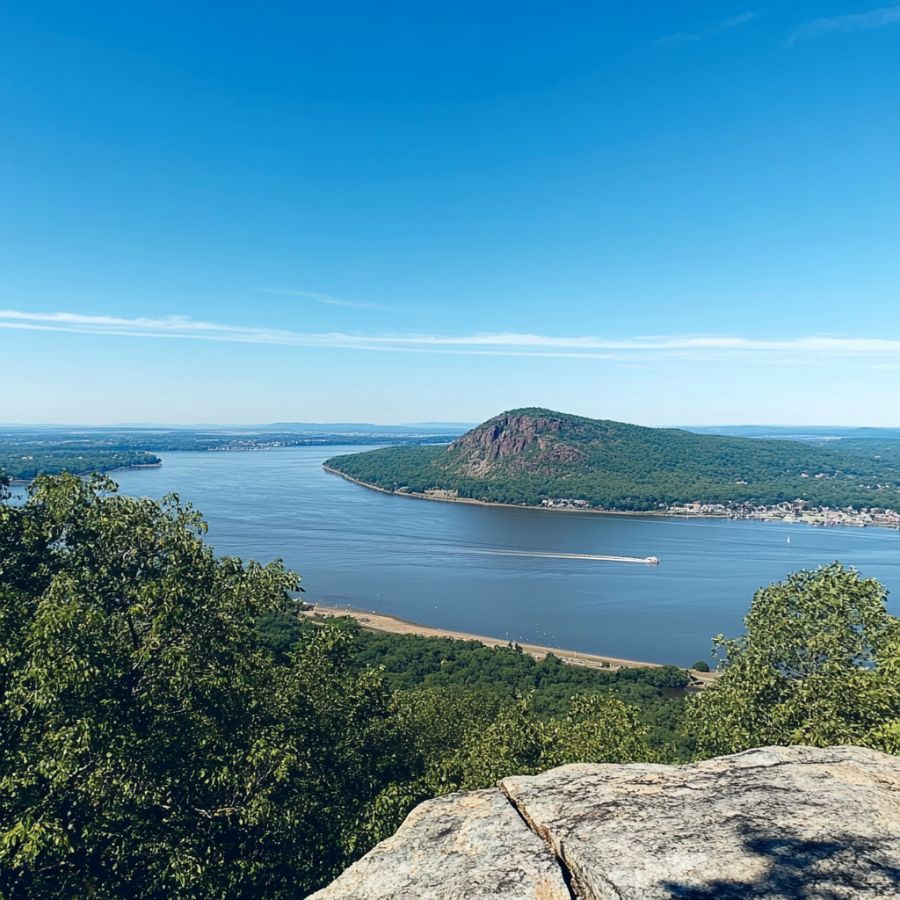
Manhattan is a famous island in New York City where several interesting minerals can be found. The island sits between three rivers – the Hudson River, East River, and Harlem River.
Azurite hunters should head to 55th Street, where this blue mineral has been found along with other copper minerals like malachite and cuprite. The area’s special rock formations make it a good spot for finding these minerals.
The ground under Manhattan is made of very old rocks called Manhattan Schist. These rocks formed millions of years ago when mountains were being built in the area. During the ice age, huge glaciers moved across Manhattan, leaving marks in the rocks that we can still see today.
Lewiston

Lewiston sits in Niagara County, close to the Canadian border. The village stands along the Niagara River, just a few miles from the famous Niagara Falls. The area shows off the impressive Niagara Escarpment, a huge rock wall that runs through the region.
Rock hunters can look for azurite along the exposed cliff faces of the escarpment. The best spots are areas where you can see green and blue colors in the rocks, which often point to copper minerals. Places near the Niagara River where water has worn away the rock are good hunting spots too.
The rocks here tell a story from 440 million years ago when this area was under an ancient ocean. These old sea beds now hold treasures like azurite for modern collectors to find.
White Plains

White Plains is located about 25 miles north of Manhattan in Westchester County. This urban area might seem like an unlikely place for gemstone hunting, but it holds geological treasures.
The city’s bedrock contains several important rock types, including Inwood Marble and Fordham Gneiss, which are part of the Manhattan Prong formation.
Azurite discoveries have been documented in this area, making it interesting for mineral collectors. Local rocks underwent major changes over millions of years, creating perfect conditions for mineral formation.
Rockhounds can search for azurite in places where bedrock pokes through the ground, especially in areas with Inwood Marble.
Gouverneur
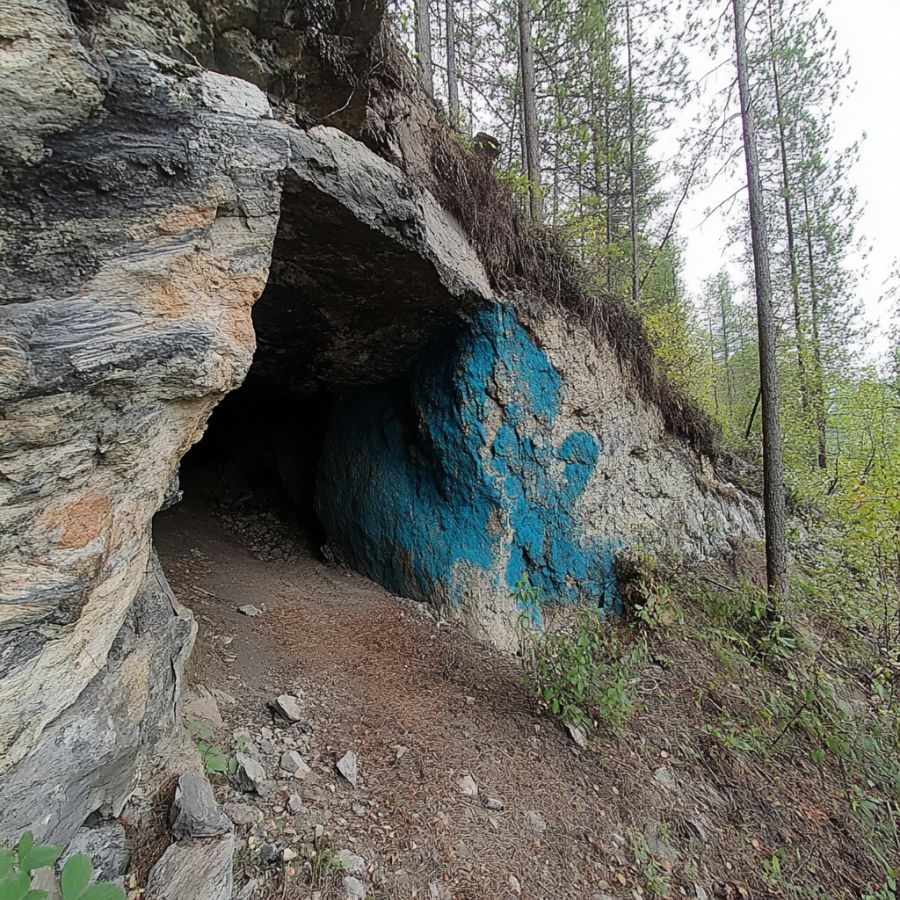
Gouverneur is a town located in the northwest part of St. Lawrence County. The area is part of the famous Balmat-Edwards mining district, which has produced many valuable minerals over the years.
The town’s ground is full of marble, dolomite, and other rocks. You can find azurite in several places around Gouverneur. The old Balmat mine is a good spot to look, where many mineral specimens have been found.
Local marble quarries also have small pockets where azurite forms. The old mine dumps and exposed rock areas are great places for collectors to search.
Many rockhounds visit this area because it has so many different kinds of minerals. Besides azurite, you might find other blue and green copper minerals in the same spots.
Places Azurite has been found by County
After discussing our top picks, we wanted to discuss the other places on our list. Below is a list of the additional locations along with a breakdown of each place by county.
| County | Location |
| Westchester | Sparta Mine |
| Richmond | Cooper and Hewitt Mine |
| St. Lawrence | Benson Mines |
| Putnam | Philips Mine |
| Putnam | Anthony’s Nose |
| Putnam | Copper Mine Brook |
| Columbia | Ancram Lead Mines |
| Orange | Greenwood Lake |
| Warren | Pahaquarry Copper Mine |
| Franklin | Azure Mountain |
| Warren | Barton Garnet Mine |
| Herkimer | Ilion Gorge |
| Orange | Limecrest Quarry |


